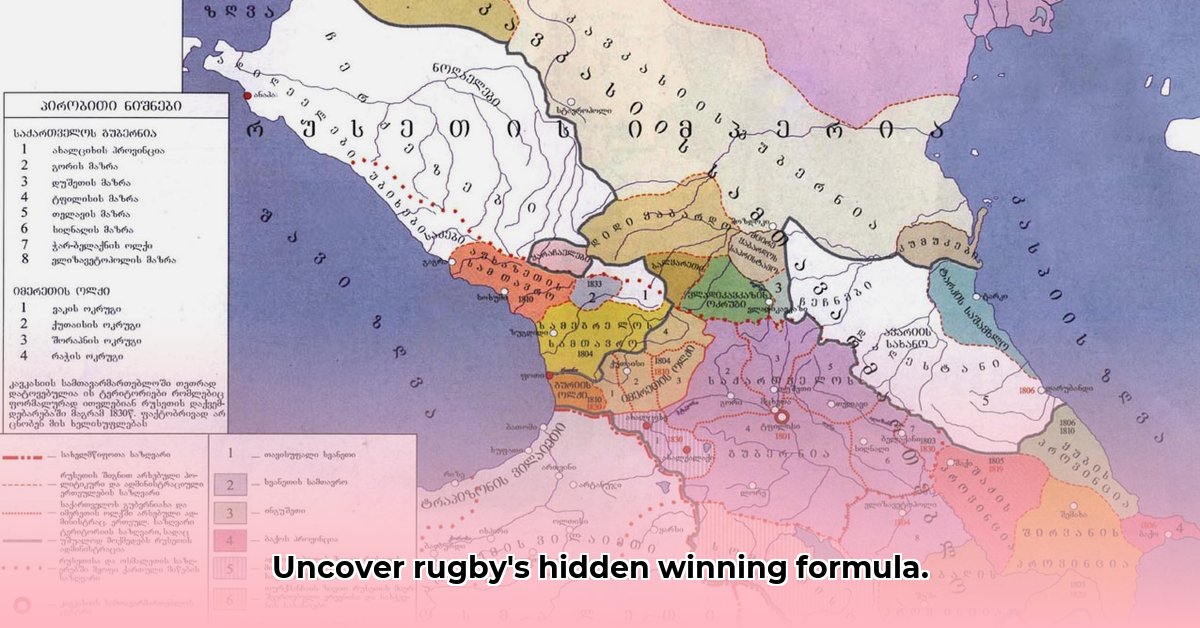
Rukebi on the Map: Unveiling the Game's Geography with GIS
Geographic Information Systems (GIS) offer a revolutionary way to analyze the spatial aspects of rugby, revealing hidden patterns and insights. Imagine viewing the global rugby landscape, pinpointing clubs, identifying demographic trends, and even assessing the sport's environmental impact – all through the power of mapping. This article explores how GIS can unlock the secrets to rugby's success.
Why are some areas rugby strongholds while others lag behind? GIS provides the tools to answer this question and more. By mapping rugby clubs, we can visualize their distribution, identifying clusters and potential areas for growth. This visual representation goes beyond simple location; it reveals the sport's spatial footprint, offering valuable insights for strategic planning and development.
Mapping the Rugby Landscape: Where the Action Happens
GIS allows for the creation of a comprehensive map displaying every rugby club, from professional teams to small local clubs. This visual representation immediately highlights geographical trends. Are clubs concentrated in urban areas, or are they distributed more evenly across rural landscapes? This analysis enables the identification of underserved areas with potential for expansion and increased participation.
Who Plays the Game? Uncovering Demographic Trends
GIS transcends simple location mapping by integrating demographic data. This allows for an understanding of the players’ backgrounds, including income levels, age groups, and ethnicities. This detailed analysis can identify disparities and inform targeted outreach initiatives aimed at promoting inclusivity and accessibility within the rugby community. For example, are specific demographic groups underrepresented in certain regions? This data-driven approach can help tailor impactful community engagement strategies.
The Environmental Impact: Rugby's Ecological Footprint
GIS provides a powerful tool for evaluating the environmental footprint of rugby. Mapping training grounds, stadiums, and travel routes enables the quantification of land use and carbon emissions. This detailed environmental assessment can pinpoint areas requiring sustainable practices, reducing the sport's carbon footprint and promoting environmentally responsible initiatives. Are transportation emissions heavily concentrated in specific regions? GIS helps us visualize and address the problem.
Analyzing Match Results: Location, Location, Location
Does the location of a match influence game outcomes? GIS enables the analysis of match results against geographical factors such as altitude and climate. This geospatial analysis could reveal a correlation between location and team performance, bringing in a whole new dimension to the understanding of success, beyond player skill and tactics. Could certain regions consistently generate higher win percentages? GIS could offer the answer.
Putting it All Together: A Step-by-Step Guide
Unlocking rugby's geographical secrets with GIS involves these key steps:
- Data Gathering: Collect data on club locations, demographics, environmental factors, and match results from various sources, including online databases and rugby organizations.
- Data Preparation: Clean and format the data to ensure consistency and readiness for GIS analysis. Address any missing information or inconsistencies.
- Spatial Analysis: Employ GIS software to analyze the spatial data, including overlaying data layers, calculating distances, and creating density maps.
- Visualization: Create clear and informative maps, charts, and graphs to effectively communicate the findings and key insights.
- Interpretation: Draw meaningful conclusions based on the data analysis, highlighting significant trends and patterns related to rugby's geographical distribution, social impact, and environmental sustainability.
The Upsides and Downsides of Using GIS in Rugby
| Advantages | Disadvantages |
|---|---|
| Comprehensive view of rugby's geography | Requires specialized software and expertise |
| Reveals hidden patterns and trends | Data availability may be a challenge |
| Informs strategic decision-making | Data analysis can be time-consuming and complex |
| Facilitates effective visual communication | Results depend on data quality and interpretation |
The future of GIS in rugby holds immense potential. From optimizing facility placement to predicting growth areas and improving tournament logistics, GIS offers a wide range of applications beyond those currently being explored. The possibilities are truly exciting, limited only by our imagination and data availability.
Key Takeaways:
- GIS provides a powerful tool for analyzing the spatial dynamics of rugby, revealing hidden patterns and trends.
- Integrating demographic and environmental data with GIS offers valuable insights for enhancing inclusivity and sustainability initiatives within the sport.
- The strategic application of GIS significantly improves decision-making across various aspects of rugby management and development.